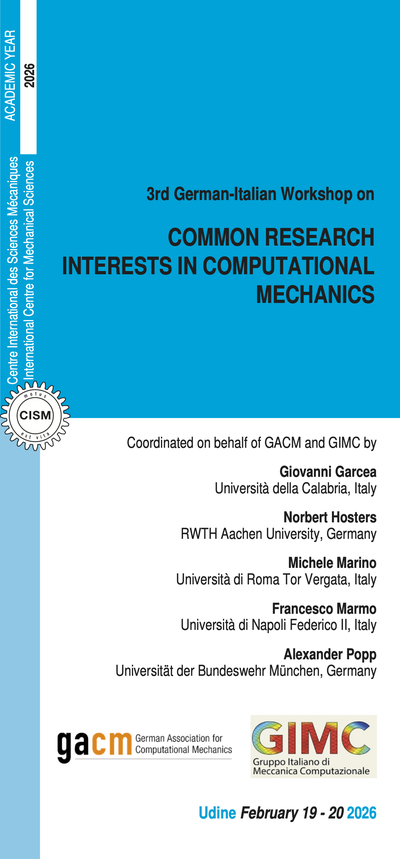As the costs and complexity of analysis, design and testing of machines, structures and systems escalate, there is an urgent need to design, develop and deploy products in the market place as quickly as possible with first time quality and high profit margin; and to develop radically new approaches for the synthesis of such engineering systems. The principal aim of this course is twofold: 1) to describe a virtual environment, based upon the principle of Dynamic Substructuring (DS), Pseudo-dynamic and Real-time testing, which will ensure that the designer can take on the leading role in future world-wide engineering development products and projects; 2) to train groups of PhD students, post docs and experienced researchers to provide them with a consider-ably wider understanding of the interconnection and potentiality of this approach. To do this, we will have to integrate cutting-edge research from the fields of linear and non-linear dynamics, automatic control, numerical analysis, system modelling and mechatronics. The course will provide different techniques and tools in order to analyse/design innovative and added-values products and systems. The essential features of these new DS and real-time approach to engineering system development are best explained by reference to a specific example, i.e. the problem of designing critical non-linear viscous fluid dampers in highway cable stay bridges. Testing of the full-scale bridge structure, including the damper, will be prohibitive in cost and time. Nonetheless, the damper is expected to be tested within a realistic environment, taking into account dynamic non-linearities, unknown/time-varying dynamics and environmental disturbances. We propose to achieve this via new DS and real-time methodologies, so that the motion of the actuated damper mechanism is regulated via a high performance adaptive, multi-axis controller, whilst the remainder of the bridge is simulated numerically in real-time. Constraint conditions on kinematic and force quantities at the interface between the physical test and the numerical substructure must be satisfied in order for the substructuring test to be valid. This demanding task is the function of the real time adaptive controller and transfer systems (actuators), based on feedback information from substructures. Thus, the original problem of designing and testing a complete (emulated) system is decomposed into the parallel testing of numerical and physical substructures, synchronised via a robust controller as shown below. The example also illustrates the main challenges that we will address in this approach: 1) development of a virtual environment for fast design of complex/smart engineering systems as one of the keys to product development and product improvement; 2) synthesis of real-time models of multiaxis non-linear dynamic systems, including the use of model reduction methods and geographical distribution of substructures. WORKSHOP. The objective of the workshop is twofold: 1) to describe physical resources across Europe and US which allow to collaborate on testing, and exploit new computational technologies in mechanical and structural engineering; 2) to promote the interest of the industry.
Rogério Bairrao (None)
4 lectures on: Shaking table testing. Applications and future developmentsGianmario Benzoni (None)
6 lectures on: Pseudo-dynamic testing and Shake tables of new generation at University of California San Diego.Dionisio Bernal (None)
4 lectures on: Applied system identification of mechanical and structural systems.Oreste S. Bursi (None)
4 lectures on: Numerical methods and algorithms for pseudo-dynamic and real-time testing with dynamic substructuring.Gaetano Manfredi (None)
4 lectures on: Advanced problems and analysis techniques in seismic engineering.Pierre Pegon (None)
4 lectures on: FE-based simulations and continuous pseudo-dynamic testing.David J. Wagg (None)
6 lecures on: Advanced problems and real-time testing with dynamic substructuring in mechanical engineering. Dynamic and control of substructured systems.
